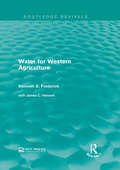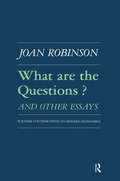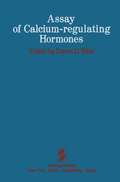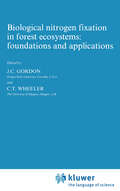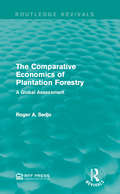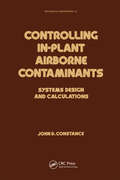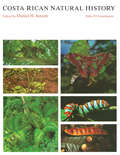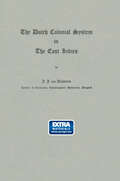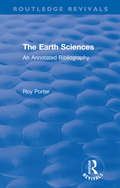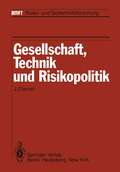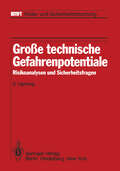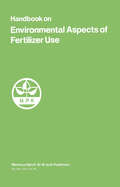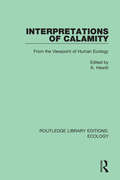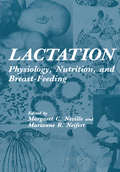- Table View
- List View
Water for Western Agriculture (Routledge Revivals)
by Kenneth D. FrederickThis title, originally published in 1982, examines the importance of western irrigation to U.S. agriculture and the impacts of the changing water supply situation on the development of western irrigation. Past trends, water supply conditions, water institutions, economic forces, technological alternatives, and environmental factors are examined for their impacts on the course of western irrigation. Water for Western Agriculture will be of particular interest for students studying environmental issues.
Water for Western Agriculture (Routledge Revivals)
by Kenneth D. FrederickThis title, originally published in 1982, examines the importance of western irrigation to U.S. agriculture and the impacts of the changing water supply situation on the development of western irrigation. Past trends, water supply conditions, water institutions, economic forces, technological alternatives, and environmental factors are examined for their impacts on the course of western irrigation. Water for Western Agriculture will be of particular interest for students studying environmental issues.
What are the Questions and Other Essays: Further Contributions to Modern Economics
by Robert K RobinsonA study of environmental degradation, this work presents the environmental problems of South Korea. The effects of rapid industrialisation and modernisation are documented along with the choices and actions which are available to the country.
What are the Questions and Other Essays: Further Contributions to Modern Economics
by Robert K RobinsonA study of environmental degradation, this work presents the environmental problems of South Korea. The effects of rapid industrialisation and modernisation are documented along with the choices and actions which are available to the country.
Ark on the Move
by Gerald Durrell'Even the most cautious of travellers would, I think, be thrilled at the idea of visiting a remote tropical island. There seems to be something about tropical islands that stirs the blood of even the most unadventurous souls.' Lying in the Indian Ocean, the islands of Mauritius and Madagascar - where millions of years of evolutionary isolation created a flora and fauna unique in the world - provide the exotic setting for Gerald Durrell's expeditionary rescue work with animals. In his personal and delightful way he entertains, educates and makes a dramatic appeal to us all about the distressing state of these beautiful and endangered species around the world and shows us the serious consequences to life and its future on this earth. This exciting journey also inspired an international television series based on the author's rescue and breeding operations.
Assay of Calcium-regulating Hormones
by Daniel D. BikleThe ability to measure accurately the hormones regulating calcium homeosta sis is the fundamental first step toward understanding the roles these hormones play in health and disease. Techniques for such measurements have only been available for the past 10 years or so and remain in a state of rapid development. Sensitive parathyroid hormone (PTH) radioimmunoassays appeared in the early 1970s, and with them came a whole new appreciation for the prevalence and implications of hyperparathyroidism, primary or secondary, in the popu lation. The calcitonin (CT) radioimmunoassay came later and achieved rapid success in the. diagnosis of a previously poorly understood cancer, medullary carcinoma of the thyroid, frequently associated with the familial multiple endo crine neoplasia type 2 syndromes (a and b). As the sensitivity of the calcitonin radioimmunoassay has improved, our understanding of the role of calcitonin in normal physiological processes has increased. The knowledge that vitamin D must be metabolized to produce its biologic effects is only 15 years old. This has had profound implications in our understanding of a variety of metabolic bone, kidney, and gastrointestinal diseases. Assays to measure the major cir culating form of vitamin D, 25-hydroxyvitamin D, were described 10 years ago. Assays for the other metabolites, in particular, 1,25-dihydroxyvitamin D, were described even more recently. As of today, we know of many vitamin D metabolites and have developed the techniques to measure most of them; how ever, many questions remain concerning their physiological role.
Biological nitrogen fixation in forest ecosystems: foundations and applications (Forestry Sciences #9)
by John C. Gordon C. T. WheelerThe Comparative Economics of Plantation Forestry: A Global Assessment (Routledge Revivals)
by Roger A. SedjoPlantation forestry is the planting, managing, and harvesting of trees for the production of industrial wood. Originally published in 1983, the principal focus and contribution of the study lies in Roger Sedjo’s examination of the economic returns in twelve forest regions throughout the world. The results of the analysis strongly demonstrate the feasibility of major expansion of plantation forestry in a number of areas around the world and suggest the likelihood of major shifts in the principal supply areas. The results also have potentially important implications for countering the threats of deforestation. This title will be of interest for students of Environmental Studies.
The Comparative Economics of Plantation Forestry: A Global Assessment (Routledge Revivals)
by Roger A. SedjoPlantation forestry is the planting, managing, and harvesting of trees for the production of industrial wood. Originally published in 1983, the principal focus and contribution of the study lies in Roger Sedjo’s examination of the economic returns in twelve forest regions throughout the world. The results of the analysis strongly demonstrate the feasibility of major expansion of plantation forestry in a number of areas around the world and suggest the likelihood of major shifts in the principal supply areas. The results also have potentially important implications for countering the threats of deforestation. This title will be of interest for students of Environmental Studies.
Controlling In-Plant Airborne Contaminants: Systems Design and Calculations
by John D. ConstanceThis book is a useful reference work for practicing engineers in their evaluation and design of systems for the control of the industrial in-plant environment. It provides design criteria, useful calculations and proven techniques to control the environment in oil refineries and chemical industries.
Controlling In-Plant Airborne Contaminants: Systems Design and Calculations
by John D. ConstanceThis book is a useful reference work for practicing engineers in their evaluation and design of systems for the control of the industrial in-plant environment. It provides design criteria, useful calculations and proven techniques to control the environment in oil refineries and chemical industries.
Costa Rican Natural History
This volume is a synthesis of existing knowledge about the flora and fauna of Costa Rica. The major portion of the book consists of detailed accounts of agricultural species, vegetation, amphibians, reptiles, mammals, birds, and insects. "This is an extraordinary, virtually unique work. . . . The tremendous amount of original, previously unpublished, firsthand information is remarkable."—Peter H. Raven, Director, Missouri Botanical Garden "An essential resource for anyone interested in tropical biology. . . . It can be used both as an encyclopedia—a source of facts on specific organisms—and as a source of ideas and generalizations about tropical ecology."—Alan P. Smith, Ecology
Costa Rican Natural History
by Daniel H. JanzenThis volume is a synthesis of existing knowledge about the flora and fauna of Costa Rica. The major portion of the book consists of detailed accounts of agricultural species, vegetation, amphibians, reptiles, mammals, birds, and insects. "This is an extraordinary, virtually unique work. . . . The tremendous amount of original, previously unpublished, firsthand information is remarkable."—Peter H. Raven, Director, Missouri Botanical Garden "An essential resource for anyone interested in tropical biology. . . . It can be used both as an encyclopedia—a source of facts on specific organisms—and as a source of ideas and generalizations about tropical ecology."—Alan P. Smith, Ecology
Costa Rican Natural History
by Daniel H. JanzenThis volume is a synthesis of existing knowledge about the flora and fauna of Costa Rica. The major portion of the book consists of detailed accounts of agricultural species, vegetation, amphibians, reptiles, mammals, birds, and insects. "This is an extraordinary, virtually unique work. . . . The tremendous amount of original, previously unpublished, firsthand information is remarkable."—Peter H. Raven, Director, Missouri Botanical Garden "An essential resource for anyone interested in tropical biology. . . . It can be used both as an encyclopedia—a source of facts on specific organisms—and as a source of ideas and generalizations about tropical ecology."—Alan P. Smith, Ecology
Costa Rican Natural History
by Daniel H. JanzenThis volume is a synthesis of existing knowledge about the flora and fauna of Costa Rica. The major portion of the book consists of detailed accounts of agricultural species, vegetation, amphibians, reptiles, mammals, birds, and insects. "This is an extraordinary, virtually unique work. . . . The tremendous amount of original, previously unpublished, firsthand information is remarkable."—Peter H. Raven, Director, Missouri Botanical Garden "An essential resource for anyone interested in tropical biology. . . . It can be used both as an encyclopedia—a source of facts on specific organisms—and as a source of ideas and generalizations about tropical ecology."—Alan P. Smith, Ecology
The Earth Sciences: An Annotated Bibliography (Routledge Revivals)
by Roy PorterOriginally published in 1983, The Earth Sciences: An Annotated Bibliography is a compact and thematically organized guide that provides comprehensive access to themes and areas of study in the earth sciences. The bibliography is not exhaustive but provides a detailed and critical index to the most important literature in the field. The book’s core focus is geology and examines the subject broadly, covering everything from glaciology, geomorphology, natural history and palaeontology, to oceanography, mapping, stratigraphy and evolution. The book provides detailed essays for each bibliographical chapter on the state of each field of research and the literature compiled for each bibliography will go as far back as around 1700 and contains a wide range of sources from across the world. This book will be of interest to academics and students of natural history, geology, and environmental sciences alike.
The Earth Sciences: An Annotated Bibliography (Routledge Revivals)
by Roy PorterOriginally published in 1983, The Earth Sciences: An Annotated Bibliography is a compact and thematically organized guide that provides comprehensive access to themes and areas of study in the earth sciences. The bibliography is not exhaustive but provides a detailed and critical index to the most important literature in the field. The book’s core focus is geology and examines the subject broadly, covering everything from glaciology, geomorphology, natural history and palaeontology, to oceanography, mapping, stratigraphy and evolution. The book provides detailed essays for each bibliographical chapter on the state of each field of research and the literature compiled for each bibliography will go as far back as around 1700 and contains a wide range of sources from across the world. This book will be of interest to academics and students of natural history, geology, and environmental sciences alike.
Genetic Engineering of Plants: An Agricultural Perspective (Basic Life Sciences #26)
by Tsune Kosuge Carole P. Meredith Alexander Hollaender Claire M. WilsonWilliam C. Taylor Department of Genetics University of California Berkeley, California 94720 It is evident by now that there is a great deal of interest in exploiting the new technologies to genetically engineer new forms of plants. A purpose of this meeting is to assess the possibilities. The papers that follow are concerned with the analysis of single genes or small gene families. We will read about genes found within the nucleus, plastids, and bacteria which are responsible for agri culturally important traits. Given that these genes can be isolated by recombinant DNA techniques, there are two possible strategies for plant engineering. One involves isolating a gene from a cultivated plant, changing it in a specific way and then inserting it back into the same plant where it produces an altered gene product. An example might be changing the amino acid composition of a seed pro tein so as to make the seed a more efficient food source. A second strategy is to isolate a gene from one species and transfer it to another species where it produces a desirable feature. An example might be the transfer of a gene which encodes a more efficient pho tosynthetic enzyme from a wild relative into a cultivated species. There are three technical hurdles which must be overcome for either strategy to work. The gene of interest must be physically isolated.
Große technische Gefahrenpotentiale: Risikoanalysen und Sicherheitsfragen (BMFT - Risiko- und Sicherheitsforschung)
by S. HartwigHandbook on Environmental Aspects of Fertilizer Use
by International Potash International Potash Institute (IPI)Interpretations of Calamity: From the Viewpoint of Human Ecology (Routledge Library Editions: Ecology #4)
by K. HewittOriginally published in 1983, Interpretations of Calamity provides a provocative critique of the ‘dominant view’ of research into natural hazards. Throughout the world, there are now many people professionally engaged in the mitigation and control of risks & hazards, and the impact of continuing economic development will ensure that they are fully employed. There is a wealth of perspectives in the book, including weather and wheat yields in the Soviet Union and Canada, an historical view of underdevelopment and hazards in Ireland and the impact of a response to drought in southern Africa, the Sahel and the Great Plains of the USA. The book reflects the major themes of hazards in the context of economic development and social change. Most of the case studies are from the rural and agriculture scene. This book provides a unique view of the vital importance of food production and of the considerable, and sometimes calamitous, impact that frost, flood, storm and drought have on the wellbeing of millions of people and on the stability of the international economic system.
Interpretations of Calamity: From the Viewpoint of Human Ecology (Routledge Library Editions: Ecology #4)
by K. HewittOriginally published in 1983, Interpretations of Calamity provides a provocative critique of the ‘dominant view’ of research into natural hazards. Throughout the world, there are now many people professionally engaged in the mitigation and control of risks & hazards, and the impact of continuing economic development will ensure that they are fully employed. There is a wealth of perspectives in the book, including weather and wheat yields in the Soviet Union and Canada, an historical view of underdevelopment and hazards in Ireland and the impact of a response to drought in southern Africa, the Sahel and the Great Plains of the USA. The book reflects the major themes of hazards in the context of economic development and social change. Most of the case studies are from the rural and agriculture scene. This book provides a unique view of the vital importance of food production and of the considerable, and sometimes calamitous, impact that frost, flood, storm and drought have on the wellbeing of millions of people and on the stability of the international economic system.
Lactation: Physiology, Nutrition, and Breast-Feeding
by Margaret NevilleThis book had its genesIs In the frustrations of the editors in locating authoritative, up-to-date material for an interdisciplinary graduate course in mammary gland biology, lactation, and breast-feeding. As we turned to the original literature several reasons for the dearth of usable material became clear: (1) In the areas of mammary gland biology and physiology, particularly as they relate to the human, reviews simply have not kept up with current research, which has in the last two decades provided tremendous insight into the mechanisms of milk secretion and its control. (2) The lack of interest in human milk as infant food inhibited researchers until very recently from investigating human lactation. (3) Much of the relevant clinical information remains anecdotal with little scientific basis. In this book we have tried to present the fundamentals of mammary gland physiology at the organismic and cellular levels in a form readily understood by physicians, scientists, and other professionals. This basic information is accompanied by authoritative reviews of the nutritional and immunological properties of human milk and by clinically relevant chapters designed to help health care professionals deal with the medical problems of the breast-feeding mother and her infant. We have strived in these chapters for up-to-date, authoritative, but readable accounts. In so far as possible we have avoided areas where much of our understanding rests on speculation. In the clinical domain this was not always possible because of a lack of solid, scientific information about breast-feeding.
